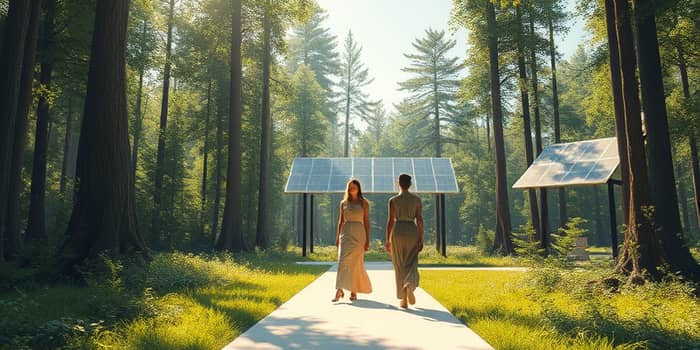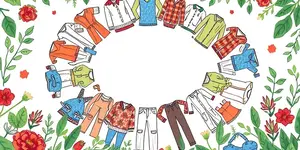In a world facing escalating environmental challenges and evolving consumer values, the notion of luxury is undergoing a profound transformation. No longer defined solely by rarity or extravagance, modern luxury aspires to reflect purpose, legacy, and responsibility. This article explores how leading brands, emerging trends, and innovative technologies are converging to reshape luxury through sustainability, offering practical insights and inspiration.
Market Context: Growth of Sustainable Luxury
The global appetite for eco-friendly luxury has never been stronger. Analysts project the global sustainable fashion market will surge from $12.46 billion in 2025 to $53.37 billion by 2032, a staggering CAGR of 23.1%. While the broader luxury sector is forecasted to grow at a more modest 3.4% CAGR through 2029, segments driven by sustainability are already outpacing traditional lines.
This momentum reflects both increasing consumer demand and the sector’s strategic pivot toward resilience. Brands are shifting budgets from relentless expansion to sustainable innovations, recognizing that long-term value lies in ethical sourcing, transparent operations, and environmentally conscious materials.
The New Luxury Consumer
Today’s high-end shoppers expect more than craftsmanship and exclusivity: they demand accountability. Surveys reveal that 72% of global consumers profess willingness to pay a premium for sustainable products. Yet, a notable intention–action gap persists, underscoring the need for brands to align marketing messages with verifiable impact.
- Demand for transparent supply chains and ethical labor practices
- Desire for products with demonstrable environmental benefits
- Interest in experiences that combine exclusivity with purpose
Bridging the gap between intent and actual purchase hinges on trust. Consumers scrutinize labels, certifications, and third-party audits to ensure authentic commitments rather than empty claims.
Brand Leadership: Pioneers of Responsible Luxury
Several trailblazers have set new benchmarks for sustainable practices, weaving environmental stewardship into their DNA. Below is a snapshot of leading examples:
These brands exemplify how luxury can coexist with rigorous integrated environmental and social criteria, fostering consumer loyalty and industry-wide transformation.
Beyond Greenwashing: Building Trust Through Transparency
Greenwashing remains a critical challenge. Estimates suggest 60% of fashion brands’ sustainability claims are misleading or unsubstantiated, eroding consumer confidence. In response, regulators are taking action. France now imposes fines up to €300,000 or 80% of ad spend for deceptive environmental marketing.
- Strict legal penalties to curb false sustainability claims
- Mandatory public reporting standards across Europe
- Third-party audits and certifications to verify brand statements
By prioritizing factual reporting and open dialogue, luxury brands can rebuild trust and stand apart in a skeptical market.
Circularity and Technological Innovation
The shift toward circular fashion models is gaining traction, emphasizing repair, resale, and recycling to extend product life cycles. Visionary brands aim to minimize virgin material use and upcycle products, turning end-of-life garments into sources of value rather than waste.
Technological solutions play a pivotal role. AI-driven inventory management and trend forecasting reduce overproduction and markdowns, though they introduce new footprints in energy consumption and e-waste. Blockchain and digital tagging enhance traceability, ensuring raw materials can be tracked from farm to finished garment.
Regional Insights and Market Opportunities
Geographical dynamics are reshaping luxury’s sustainable frontier. In India, a burgeoning middle and affluent class prizes both tradition and eco-conscious credentials, creating fertile ground for responsibly produced artisanal goods. Mature markets in Europe and North America are evolving toward experiential luxury, where curated travel, private events, and immersive brand experiences are designed with minimal environmental impact.
These regional nuances present tailored opportunities for brands to engage distinct audiences and cultural values, from handcrafted textiles to high-tech circular services.
Conclusion: Sustainability as the New Gold Standard
As the luxury industry navigates a complex landscape of environmental imperatives and consumer expectations, sustainability emerges not as a marketing add-on but as the defining ethos of the next era. Brands that embed purpose into every stage—from design and sourcing to distribution and end-of-life management—will not only secure competitive advantage but also shape a more resilient, equitable future.
The journey toward sustainable luxury demands unwavering commitment, transparent communication, and innovative partnerships. Yet the rewards—a loyal, values-driven customer base and a lasting positive impact on the planet—are the true hallmarks of modern prestige. By embracing sustainability as the new gold standard, the luxury sector can fulfill its promise of exceptional quality while championing a thriving global community.
References
- https://world-collective.com/blog/2025-fashion-statistics-insights-for-strategic-sustainable-and-connected-industry
- https://www.mckinsey.com/industries/retail/our-insights/state-of-luxury
- https://www.simon-kucher.com/en/insights/luxury-study-insights-luxury-industry-trends
- https://pomp.store/blogs/journal/best-sustainable-luxury-brands
- https://bestcolorfulsocks.com/blogs/news/fashion-sustainability-claims-accuracy-statistics
- https://sites.lsa.umich.edu/mje/2025/05/13/sustainability-as-strategy-kerings-esg-leadership-in-a-transforming-luxury-industry/
- https://www.newbreedrevenue.com/blog/7-examples-of-strong-brand-positioning-and-why-they-work
- https://www.coherentmarketinsights.com/industry-reports/global-sustainable-fashion-market










